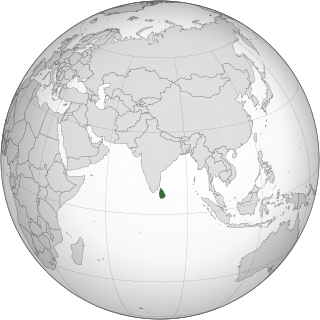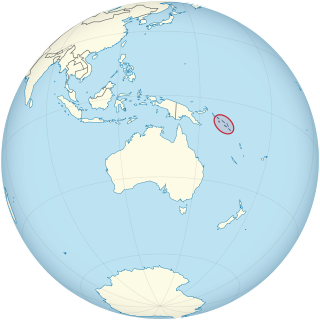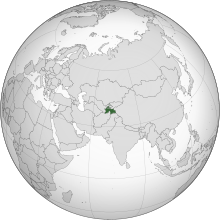
The Single Convention on Narcotic Drugs, 1961 is a United Nations treaty that controls activities of specific narcotic drugs and lays down a system of regulations for their medical and scientific uses; it also establishes the International Narcotics Control Board.

Drug liberalization is a drug policy process of decriminalizing, legalizing, or repealing laws that prohibit the production, possession, sale, or use of prohibited drugs. Variations of drug liberalization include drug legalization, drug relegalization, and drug decriminalization. Proponents of drug liberalization may favor a regulatory regime for the production, marketing, and distribution of some or all currently illegal drugs in a manner analogous to that for alcohol, caffeine and tobacco.
The drug policy of Portugal, informally called the "drug strategy", was put in place in 2000, and came into effect in July 2001. Its purpose was to reduce the number of new HIV/AIDS cases in the country, as it was estimated around half of new cases came from injection drug use.

Cannabis in India has been known to be used at least as early as 2000 BCE. In Indian society, common terms for cannabis preparations include charas (resin), ganja (flower), and bhang, with Indian drinks such as bhang lassi and bhang thandai made from bhang being one of the most common legal uses.

Cannabis is illegal in Nigeria, yet the country is a major source of West African-grown cannabis, and ranked the world's third highest consumer of cannabis.

Cannabis is one of the most popular controlled substances for cultivation and consumption within the country of Belgium. Following global trends, cannabis consumption rates in Belgium have been steadily increasing across the country since the 20th century, and cannabis cultivation continues to expand rapidly on a national scale. Despite significant legal rework of cannabis-related laws since 2010, certain elements of the consumption and cultivation of cannabis are considered to exist within a “legal grey area” of Belgian law. Cannabis is technically illegal in Belgium, but personal possession has been decriminalised since 2003; adults over the age of 18 are allowed to possess up to 3 grams. The legal effort to restrict cultivation and growth has gradually subsided, resulting in an increase of the growth and consumption of cannabis and cannabis-related products.

Cannabis has been cultivated in Japan since the Jōmon period of Japanese prehistory approximately six to ten thousand years ago. As one of the earliest cultivated plants in Japan, cannabis hemp was an important source of plant fiber used to produce clothing, cordage, and items for Shinto rituals, among numerous other uses. Hemp remained ubiquitous for its fabric and as a foodstuff for much of Japanese history, before cotton emerged as the country's primary fiber crop amid industrialization during the Meiji period. Following the conclusion of the Second World War and subsequent occupation of Japan, a prohibition on cannabis possession and production was enacted with the passing of the Cannabis Control Law.
Cannabis in Latvia is illegal for recreational and medical purposes, but production of industrial hemp is permitted.

Cannabis in Sri Lanka is legally sold through Ayurveda herbal shops, and can be used for medical and scientific purposes if given a license by the Ministry of Health. For recreational usage cannabis is not legal. However, cannabis plays a major role in the traditional culture of the island, with the specific Sinhalese or Sanskrit names virapati (“hero-leaved”), capta (“light-hearted”), ananda (“bliss”), trilok kamaya and harshini indicating its various properties, such as inducing euphoria and heightening sexual energy.
The list includes and details significant events that occurred in the global history of national-level implementations of, or changes made to, laws surrounding the use, sale, or production of the psychoactive drug cannabis.
Cannabis in Lesotho is illegal for any use, but largely tolerated. Cannabis is widely produced in the country, being the nation's most significant cash-crop. In the 2000s it was estimated that 70% of the cannabis in South Africa originated in Lesotho. In 2017 Lesotho became the first African nation to grant a license for the cultivation of medical cannabis.
Cannabis in Liechtenstein is illegal with severe penalties for the production, sale, and possession of marijuana for medicinal or recreational purposes.
Cannabis in Monaco is illegal. The production, sale, and possession of marijuana for medicinal or recreational purposes being a criminal offense with a penalty of up to one year in jail in addition to a fine of up to €1680. Despite the strong laws, the police and courts are often lenient, letting offenders off with a warning.
Cannabis in Djibouti is illegal with penalties for the production, sale, and possession of marijuana for medicinal or recreational purposes. Offenders may be fined or receive up to five years in prison. Use of cannabis in Djibouti is low due to poor conditions for cultivation and the local preference for the legal drug khat.
Cannabis in Eritrea is illegal with severe penalties for the production, sale, and possession of marijuana for medicinal or recreational purposes. Offenders are imprisoned up to twelve months and fined up to 50'000 Nkf for possession. Conditions for cultivation in Eritrea are poor.
Cannabis in Haiti is illegal with severe punishments for the production, sale, and possession of marijuana for medicinal or recreational purposes.

Cannabis in Kiribati is illegal with severe punishments for the production, sale, and possession of marijuana for medicinal or recreational purposes. A 2011 survey of young people, found that 6.8% of males and 1.6% of females had ever used cannabis.

Cannabis in the Solomon Islands is illegal for the production, sale, and possession of marijuana for medicinal or recreational purposes. Offenders receive a fine of up to $100,000 or imprisonment of ten years. A 2011 survey of young people, found that 16.1% of males and 11.1% of females had ever used cannabis.

Cannabis in Tuvalu is illegal with severe punishments for the production, sale, and possession of marijuana for medicinal or recreational purposes. Due to the nation's high development index, illegal substance abuse effectively does not exist in Tuvalu and there were no reports of drug-related crimes on Tuvalu in 2019 or 2020.
Cannabis in Kosovo is illegal for both medicinal or recreational purposes. Penalties are defined by Article 269 of the Kosovo Criminal Code, last revised in January 2019. For first-time offenders, possession of illicit substances leads to either a one-year sentence or, more likely, a financial penalty of €250-300. A 2014 survey of 5500 reported that 10% of Kosovans knew someone who had used cannabis and 12.6% reported having easy access to cannabis.









